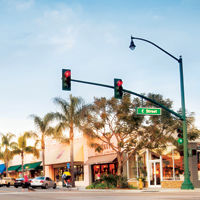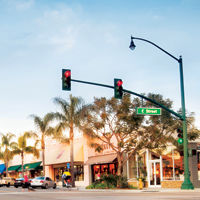It seems silly to debate the definition of neighborhoods, but one reader called us out on our loose def after flipping through our March cover story. He complained that neighborhoods are not zip codes, communities, or cities; rather, they are measured by blocks or streets. True that.
Thing is, San Diego is so spread out, we can’t talk about every ten-block radius. When we talk about an area, sometimes we go by city (Encinitas), neighborhood (Bird Rock), or chunk of blocks (Gaslamp). It’s hard to be consistent.
The official city data we accessed for the story was divided by zip codes, but the zip code data didn’t get down to the neighborhoody level we wanted, and some neighborhoods overlapped two separate zips.
It was quite the dilemma. It was a lot of discussions between editor Erin Chambers Smith and I.
But take any city—NYC, for example. Manhattan has very distinct hoods—SoHo, Spanish Harlem, FiDi (Financial District). But if you’re publishing a magazine about the area…what about the other boroughs? You have to cover neighboring communities like Prospect Heights and Park Slope in Brooklyn. And you can’t just ignore the Bronx. Queens? And what about New Jersey? That’s another state, but Jersey residents read your mag, too. And Connecticut! They all commute to NYC. Oy, it’s a mess.
So you see, we took some editorial liberties here.
Sidenote: This promotional piece describes SD as a “City of Villages,” although it’s pro-One Paseo in Carmel Valley, and the term is slightly sentimental and kinda propaganda-ish. To me, it feels like San Diego is a one big county of suburbs and business parks.
Where do you live? Or rather, where do you tell people you live? How do you describe your town to other San Diegans?

Are we a “City of Villages”?
PARTNER CONTENT
Sam Wells


















